#immunologic
Explore tagged Tumblr posts
Text
Found this because of @sanddoc06 . No clue where it originally came from, but I had to share it.

19K notes
·
View notes
Text
The risk perception gap is especially harmful when it comes to science and health topics.
The risk perception gap: excessive concern about things that pose little risk and insufficient concern about things that pose greater risk
Vaccine Hesitancy and Anti-Vaccine Rhetoric:
One of the most prominent examples of the risk perception gap is with vaccine hesitancy, where the perceived risk of vaccine side effects or the impact of vaccine ingredients is often much higher among the public than what is supported by scientific evidence.
In contrast, the benefits of vaccination and their ability to prevent deadly diseases (remember, measles is back) are underestimated. That is true with nearly all vaccines nowadays, with many people diminishing the substantial positive impact that vaccine have on individual and collective health (I discussed the harm of prominent figures, like Andrew Huberman, doing this here). As a result of this gap, vaccination rates for preventable illnesses are declining, and increased outbreaks of diseases that were previously eliminated or well-controlled are rising.
Food safety:
Conversely, risks associated with trace levels of chemicals used to grow crops are vastly exaggerated. This creates fear around more affordable conventional food items based on misinformation and misunderstanding of chemistry and toxicology when there is no credible scientific evidence to support these claims.
#vaccines#vaccine#risk perception gap#andrea love#immunologic#if you're not subbed to this newsletter i recommend doing so#she doesn't post often and every article is wort reading#especially if you're interested in increasing your science literacy#anti vaxxers#outbreaks#glyphosate#gmo#pesticides
0 notes
Text
Playing through the greenery and litter of a mini forest's undergrowth for just one month may be enough to change a child's immune system, according to an experiment in Finland. When daycare workers rolled out a lawn, planted forest undergrowth (such as dwarf heather and blueberries), and allowed children to care for crops in planter boxes, the diversity of microbes in the guts and on the skin of the young kids appeared healthier in a very short space of time. Compared to other city kids who play in standard urban daycares with yards of pavement, tile, and gravel, 3-, 4-, and 5-year-olds at these greened-up daycare centers in Finland showed increased T-cells and other important immune markers in their blood within 28 days.
Continue Reading.
7K notes
·
View notes
Text
"A clinical trial studying severe allergic reactions in the U.K. is being called “life-transforming.”
Five United Kingdom National Health Service (NHS) hospitals are participating in the £2.5 million ($3.2 million) trial to help patients live with their food allergies.
The study is being funded by the Natasha Allergy Research Foundation, Sky News reported. The foundation was formed in the memory of Natasha Ednan-Laperouse, who died in 2016 after eating a baguette that had sesame in it...
The trial is studying clinical oral immunotherapy treatments in which patients are given small doses of the food to which they are allergic to build up their tolerance. The food is given under medical supervision by trained staff, The Telegraph reported.
The study has 139 people participating who have allergies to peanuts or cow’s milk. They range in age from 2 to 23 years old, the BBC reported.
The Food Standards Agency said 2 million people in the U.K. have a diagnosed food allergy. In the U.S., about 5.5. million children have a food allergy, the National Institutes of Health reported.
One 11-year-old who was diagnosed with a severe peanut allergy when he was an infant can now eat six peanuts.
A 5-year-old with a milk allergy can drink 120 ml of milk every day and can enjoy a daily hot chocolate, the BBC reported.
“To have a patient who has had anaphylaxis [Note: Anaphylaxis is an allergic reaction so severe that it's potentially fatal without immediate treatment. It is very common with peanut allergies in particular. x] to 4mls of milk to then tolerate 90mls within six to eight months is nothing less than a miracle,” Sibel Donmez-Ajtai, a pediatric allergy consultant and principal investigator at Sheffield Children’s NHS Foundation Trust, said, according to Sky News.
The final results of the study are expected to be released in 2027.
Similar studies have been conducted in the U.S. To find one, visit FoodAllergy.org.
Earlier this year, the NIH released the findings of a study of an antibody treatment that would help children consume allergy triggers safely."
-via WHIO 7 Local News, May 8, 2024
#allergies#allergic reaction#anaphylaxis#epipen#peanut allergy#milk allergy#peanuts#milk#medical news#public health#immune system#immunology#united kingdom#good news#hope
3K notes
·
View notes
Text
Got a glimpse of where we're at as a country medically via the r/nursing subreddit. People are really not okay and it's deeply scary. 'Letting it rip' when it comes to covid is killing thousands and disabling millions. With the latter, here's what it looks like:
Nurses saying they are seeing ear infections in kids all the time secondary to other illnesses (or routinely in adults which they have never seen before), nurses saying their hospitals are overrun by flus, rsv, norovirus, mycoplasma pneumonia. many people saying they went to the doctor sick as a dog and came out with 3 different illness diagnoses at the same time or that they and their kids get sick over and over and over. it is not normal for this to happen. we were lied to about covid, y'all.
have you and the people around you been physically as well this last year or two as they were in 2019?
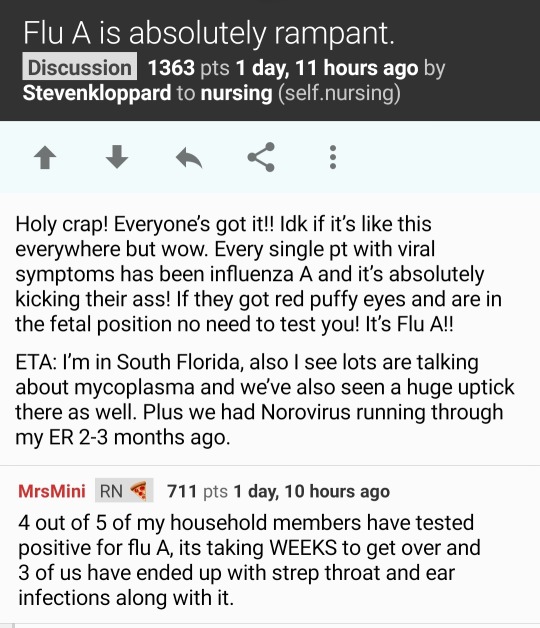
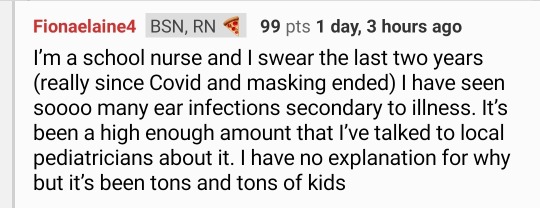


If you didn't know, as a lot of people don't - covid makes you immunocompromised. It damages the immune system, blood vessels and organ systems. It's a vascular infection, not a cold. the more infections you get, the worse it is. In the lab it's considered a level 3 pathogen (categories are for risk level/safety protocols), in the same category as tuberculosis. People are being treated with IVIG, because it's for immunocompromised people.
Also there is improper preparation and tracking for a h5n1 (type of bird flu) that has a very real chance of evolving to become a pandemic this and/or next flu season. they are finding it in wastewater all over the country, someone in Louisiana is in critical condition with it. Flu vaccine provides partial protection to it so I'd highly recommend getting that this and next winter.
Following epidemiologists is really important and helpful. The government wants you to go to work and think things are normal so they don't have to send you another check - they are not invested in our collective wellness (in fact, they take tons of lobbying money from insurance companies invested in keeping you sick). With some of these folks saying it is taking them weeks to recover from the flu, I wonder if some of it isn't bird flu, though it could be just being significantly immunocompromised.
fwiw masks work. I haven't gotten as much as a cold in years. well fitting kn95s and n95s protect you. even if you can't wear one at work, wear one to the doctor, at the grocery store and pharmacy. it would really help disabled people in general too.
562 notes
·
View notes
Text



whenever I feel sad I just sketch these guys to cheer me up,,, have a sketchdump,,,
#chia draws#one piece#kinda low quality doodles but eh.#they’re the only thing keeping me going right now (unable to get my meds)#trafalgar law#donquixote rosinante#corazon one piece#trafalgardwaterlaw#“because I said so!” law: “heh… pitiful… appeal to authority lol”#some of these are actually from last year but gotta free up space u know#yesterday I blinked and suddenly I had written like 5k of corazon/reader fake marriage au slow burn#I mean… at least I’m writing again?#should have been studying immunology but ehhhh
364 notes
·
View notes
Text

every once in a while scientists cook so hard when making names
149 notes
·
View notes
Text
Tragic Accident
AKA the events that lead to the Human Connection series
Logan Howlett x Reader with injury related memory loss









Word count: 2.5K 3.8K after revisions
Author’s note: I do in fact have more! (I would like to thank this person for your patience, I started this when you sent this in but left it half done because of finals). Still inspired by Pandapetals’ memory loss fic. This is what led to the accident and when Logan actually saw the wreckage of an accident (because I apparently can’t just be content with being happy!). It’s kind of from his perspective? Still written in second person though.
Warnings: Major angst, stupid argument, car wreck, drunk driver (not Logan or the reader), reader refered to as she/her and Logan’s wife
Everything started in your home office. It was the busy season for teachers: checking that you taught the whole curriculum; assigning and then grading final projects; parent-teacher meetings. That night you were up grading group projects that had been turned in early. It was midnight when Logan walked into the room. It was one of many late nights you had recently. The two of you tended to be night owls anyways but this many nights without more than 4 hours of consecutive sleep was starting to get to you both. It wasn’t obvious but you could see it in the small details of your relationship. The way there was less exchanged affection. The way you helped each other with little things less. The way the physical space between you emphasized the growing separation. Logan had been laying in bed before he entered the office. He walked in and put his hands on your shoulders, maybe a little less gently than he normally would have.
“Babyy, why haven’t you come to bed yet?” You brought your hand up and softly rubbed his.
“Sorry hon, I just want to get these done tonight. This is the last one.”
“It can’t wait until tomorrow?” You spun your chair around to face him.
“It could.. But if I finish them as they come in, I’ll be done before finals week so I can spend more time with you!”
“You could spend more time with me now if you just came to bed-”
“I know, I know. But these kids finished it early, they’re already on pins and needles waiting for an answer, I shouldn’t make them wait longer than I need to. And you should be asleep already anyways, this was the one night this week you can actually get to bed at a decent time.”
“Tried. It’s always harder without you.” You stood up and brushed a hand through his hair.
“Poor baby. It won’t be much longer. I’ll be there soon, I promise.”
“I’ll just stay in here with you then.”
He walked over to his own desk and sat down across from you, watching as you finished grading. It was 10 minutes before Logan spoke up again.
“You almost done?”
You sigh and run your hands through your hair.
“Nope, not quite. Go to bed, I’ll only be a little longer.”
“I.. Yeah alright.”
He shook his head then got up and walked out. His jaw was tense as he paused at the door like he was going to say something. Apparently he decided against it and closed the door on the way out with a sigh.
He lays in bed. Staring at the ceiling, lost in thought. Logan had felt neglected before, just not usually by you. He was plenty used to being ignored or abandoned. It had happened before but this time was supposed to be different. You’d always been there before. You’d been through so much together. It was only now it felt like you were drifting away. You’re a busy person, he knows that. You’re always eager to help out in any way you can. From one-on-one training or tutoring with struggling students to filling in for a fellow teacher. You were always there for everyone else. But now it seemed to him that you were giving your time to anyone but him. It seemed like you were trying to avoid him. He thought back to the last few weeks. He’d twice tried to set up a date night with no success, the most recent attempt was the week prior.
He had caught you in between classes, preparing for the next lecture in an empty room.
“Heyy, I was thinking. It’s been a while: do you want to go out tonight?”
“I wish I could but I’m helping Jean tonight, some lab thing she’s trying to figure out. I’m honestly flattered she asked me-” You stopped yourself when you saw the look on his face, his eyes now avoiding yours as he pretended to study the ground. “I’m sorry Lo, I thought I told you on Monday.”
“No- it’s alright. I understand.. I’ll see you later though?”
“Yes. She said that she shouldn’t need me past 8 o’clock.”
You walked in the door at ten.
“Hey,” Logan said half heartedly from the couch as you came up the stairs. He didn’t know how late you’d be until you called at nine to tell him that things went well enough that Jean wanted to repeat the experiment to see if it was a fluke.
“Hey.. I’m sorry, I know I said I’d be home sooner. I’ll make it up to you.” You cupped his face and kissed the bridge of his nose. “We could go out this weekend?”
“No, I’m helping Scott fix his bike; and with Scott, that’ll be an all weekend project.”
“Next weekend then. We’ll find time. We always do.” Your tone was very matter-of-fact as you sat down next to him. He put an arm around your shoulders and you nuzzled into his chest as you leaned into him.
“Yeah. I know. I just hate feeling like I never see you anymore. I know you didn’t know that was going to happen but you could have waited to rerun everything on a different night..”
“Yeah.. I guess we’re just too popular” You said, trying to joke about the situation to relieve some of the tension between you. It worked for the time but Logan still didn’t feel good about it. He felt like you just pushed aside his feelings. Just laughing it off to avoid an actual conversation.
The thought brought him back to the present moment. He went back into the office, unsure of exactly how much time had passed since he left. He walked around to his side, sat at his desk and faced you. You looked up from what you were doing but he spoke before you could.
“It feels like we never just spend time together anymore and I want to talk about it.” You push your work aside and turn to face him more directly. He leans forward with his forearms on his desk.
“I only have one section left to read then leaving overall feedback. Can we talk about it tomorrow?”
“No, you always do this. I want to talk about it. I don’t want you to keep pushing me aside. What happened with us? Why do you spend your time everywhere else but with me?!”
“Logan I-”
“No, I know you care about your students but you don’t even look at me anymore.”
“Okay.. A bit of an exaggeration but yeah, I mean that’s the job. Come on, you’re a grown up. I thought you could handle a little less attention than what you’re used to.”
“You can just say it. I’m the least important thing in your life.”
“Oh don’t be dramatic. You’re still impor-”
His hand loudly hit the desk, making you jump.
“Stop doing that! Stop brushing me off!” He sighed and looked away. “Fuck- Ok, I just- Whatever, I’ll be in the kitchen.” He stood up and walked out. You didn’t try to stop him.
You put your face in your hands. You could admit, things had been stressful lately. Things had just been busy. Apparently after five years of being married, you had been putting Logan on the backburner more than you thought. But he had done the same with you hadn’t he? That’s just how it was sometimes. Why was he so upset about it this time? What changed? After a few minutes of letting him cool down, you sighed and got up to follow him to the kitchen. The only light in the open room was the soft glow of the hanging kitchen lights. He was sitting at the table with his hand in his hair. He looked up as you walked in.
“You always push me aside for everything else.” You came to apologize but now that felt more difficult than anything. Something about the way he said it gave you the urge to defend yourself. Maybe it was pride, maybe it was a lack of sleep. Either way, you pushed back.
“You act like I purposefully ignore you-”
“Sometimes, I wonder if you do!”
“Okay don’t put this all on me. We’re both busy. That’s just how it is right now, I don’t know why you have a problem with it all of the sudden.”
“You don’t know?! You don’t know because you never listen to me.”
“Oh I never listen to you?”
“Yes. I listen to you, I-”
“No no no no no. If you listened to me, you’d already know when I’m not going to be home. Because I actually make plans before the night of.”
“This again? I swear you never told me-”
“Whatever- that’s not going to get us anywhere. If you really want to talk, let’s talk about how you can be as busy with your students as you’d like but as soon as I do, then it’s a problem.”
“That’s not true!”
“Sure it is! But you’re a man, you can meet up with whoever you want. You know, I’m a woman so I should just be grateful that you let me have a job at all, right?”
“Why are you making this a sexism thing? When have I ever said anything like that to you?”
“You haven’t, but-”
“Exactly. I haven’t. Because I don’t think like that. Just because that was okay when I was growing up, doesn’t mean I’m like that. You know I’m not like that!”
“I thought so but sometimes, I’m not so sure.”
“And you don’t bring that up? You know you can talk to me- I’m not like you, I’m not just going to keep putting it off so we never talk about something you have a problem with.”
“When the hell have you brought up any of this before tonight?”
“I haven’t had the chance to because anytime there’s even a hint of a problem you just make it into a joke.”
“I didn’t realize I was doing that, maybe if you brought things up when they happened then we wouldn’t need to get to this point!”
“Yeah it’s all my fault, like everything else.”
“Oh, really defending your argument there- I’m so glad we didn’t wait to talk!” You started to pace around the area next to where he stayed seated. Walking between the table where he was and the counter off to his left.
“That is not fair. If we put it off again we would never have this conversation.. And this isn’t just about me ‘not getting attention,’ this is about you. This isn’t good for you. You need to get more sleep.”
“Oh but you’re just fine going without sleep, you’re the mighty Wolverine.”
“That’s not- No! Actually- Fine, you’re right. I am the wolverine, you don’t have the same mutation-”
“Maybe it doesn’t affect you as much, but it sure as hell still affects you. You’re still a human being Logan! I know my limits, you don’t need to hover, telling me to come to bed- It’s just a reminder of how slow I am- And it completely throws me off-”
“Don’t act like I’m not allowed to worry about you-”
“You’re allowed to worry, but that doesn't mean I’ll have any less-”
“Would you stop cutting me off?” He shouted the words through half gritted teeth. You took a step back. Logan never shouted at you, he barely ever raised his voice when you had disagreements. Your eyes flashed to the floor to avoid the intensity of his gaze.
“S-sorry.”
“I just-” He said your name quietly under breath and a hand went up to squeeze the bridge of his nose. “I just want to be how we were. I just want some of your time. I at least want you to pretend like you like me.”
“I do like you.” Your muscles that tense when he shouted had now relaxed and you could hear a nip of attitude in your own voice.
“But you don’t act like it! Not anymore at least. You act like me being in your life is an inconvenience.” His voice was consistently raised now. You let out a small laugh.
“God, you are so dramatic! Please get some sleep, you’re acting like a child who hasn’t had a nap. You’re worse than half the freshman students right now.”
“For fucks sake, would you just listen to what I’m saying for a minute? Actually listen and process what I’m saying. Why can’t you just take me seriously?!”
“Because I don’t know what you want me to say.”
“JUST TALK TO ME”
He stood up and yelled the phrase louder than he meant to. Again, you took a few steps back. His large frame still intimidatingly towered over you.
“That- that’s all I want from you! A real conversation.”
You start walking back to the bedroom. Logan tried to follow you.
“I need some space-” Logan stopped.
“Yeah, go. Keep avoiding me.” You sighed but kept walking into the bedroom. You grabbed your phone, keys, and wallet, putting them into a mostly empty messenger bag that was currently easier to get to than a purse. You threw on a jacket then left your bedroom. You walked past your husband in the kitchen.
“We both need to cool off. I’m going to stay at the school tonight.”
“Fine, go.”
“Good night”
“.. Night.”
Right before heading out the door; keys in one hand, the other on the doorknob. You sigh and turn around then walk back to him. He’s leaning on the kitchen counter, facing away from you.
“Hey,” he turns around.
You hit his chest lightly before grabbing the collar of his shirt and kissing him forcefully. You kept your eyes closed and your face close to his as you spoke.
“You are so frustrating.”
“I know.. Try talking to you.” You sighed quietly.
“..I love you”
“I.. I know.” A little sadder that time. He held onto the counter that was now behind him to keep himself from giving in to you. You kissed him again, much more softly this time.
“Drive safe..” He whispered as you pulled away. You nodded and left.
Hearing the sounds of the garage door open then shut was enough to make him start feeling guilty for not saying ‘I love you’ back. You were fighting, sure, but he did still love you.
〰️〰️〰️〰️〰️〰️〰️〰️〰️〰️〰️〰️〰️〰️〰️〰️
Logan went to bed but he couldn’t sleep. He tossed and turned for almost an hour, listening to the soft taps of rain on the window until his phone rang. He answered it without looking, confident that you must be calling to talk or to apologize.
“What? Calling to apologize-” Annoyance dripping from tone.
“Sir, I’m a paramedic. Is this Logan Howlett?” He was caught off guard.
“What? Yes, yes that’s me. Why are you calling?” He sat up, a sense of dread creeping in.
“I’m with your wife right now, your information was in her wallet-”
The paramedic explains that you were in an accident and you’re going to be taken to a nearby hospital. You’re unconscious but they’re working on stabilizing you. He explains that as soon as you get there you’ll be taken to surgery.
“Most likely she’ll be in for a few hours and even when she’s out, it’ll still be a while before the anesthetic wears off. I know you’re freaking out right now but- Listen man, if it were me; I’d take a minute to process everything. Pack a bag: comfortable clothes, a book, crossword puzzles- just things that’ll make her comfortable while she has to stay there to be monitored. It’ll give you a sense of purpose, because you can’t do anything right now anyways, and it keeps you from having to leave her later when she is awake.”
“Yeah. Yeah alright. I’ll do that” They exchanged the remaining information then hung up. As he was doing what the paramedic instructed when he got another call. This was from the police. He was informed that he could come to the scene and retrieve anything valuable from the car before it was towed. It had been moved into a nearby church parking lot for the time being, that’s where he was told to go.
“Do you know what caused the accident? What happened?”
“Yeah, the other guy ran a red light. Didn’t even slow down. Because of the angle of the intersection and how fast he was going, she probably didn’t even see him until after the collision. He’s been arrested already, we’re waiting until he sobers up to ask him more about what happened, he wasn’t very intelligible. We know he was drinking but by the way he’s acting we think he’s on something else too.”
“Jesus..”
〰️〰️〰️〰️〰️〰️〰️〰️〰️〰️〰️〰️〰️〰️〰️〰️
He pulled into the small parking lot, marked by a sign stating there was an extra church service for Easter that had yet to be taken down. There he saw another truck. It was black and lifted and had more than a few dents that were clearly from screwing around rather than actual work. The front was basically caved in but the damage was minor, especially compared to what your car looked like. It was almost half of the size it used to be, completely crushed in on the drivers side.
“She’s lucky, you know.” Logan looked up, searching for the source of the voice through the pouring rain. A firefighter walks over.
“Usually people don’t survive accidents like this but the collusion happened more towards the back.. You’re family, right?”
“Uh yeah,” He held up his left hand, “Husband.”
“Yeahhh. Don’t worry about her. Her chances are looking good right now.”
“There’s more blood than I thought there would be.” He could smell it when he pulled up but getting this close he could see that it was yours; the other driver hadn’t been injured nearly as bad. He was hating his heightened senses that made it feel like the smell of iron was surrounding him.
“Oh yeah, there was a lot more in the street before the rain washed most of it away.” Logan looked increasingly nervous.
“So you came to get things from the vehicle?”
“Y-yeah.”
“Well there’s a lot of broken glass so if you need me or my colleagues to grab anything, just let us know.”
“No, I’ll be alright. Thanks.”
“No problem. We’ll just be talking with the officers if you change your mind.”
He got closer to your car, or what was left of it. Your keys had been pulled out of the ignition but were sitting on the dashboard. He picked them up and tried to ignore the blood and focus on where you usually leave things.
“Glove box, everybody keeps things in the glove box.” he thought aloud, quietly.
He walked around to the passengers side. Upon opening the door he saw your bag on the floor, sitting upright. Your phone and wallet were still inside although your ID and emergency sheet were separate. He assumed the first responders had opened your wallet to find such information. Logan picked up the bag and opened the glove box. He took everything out, placing it into the bag. Lucky for him, you didn’t keep much in your car. He took down the stuffed animal you kept on your dashboard and grabbed your blanket from the trunk. He threw the few other things you kept in your car into your bag then went to his own vehicle. An officer stopped him to talk to him about more details but his mind was only on you. None of the other details mattered if you weren’t okay.
〰️〰️〰️〰️〰️〰️〰️〰️〰️〰️〰️〰️〰️〰️〰️〰️
The drive to the hospital was silent. His thoughts were distracting enough. Logan felt like the drive was twice as long as it should have been. It felt like he was holding his breath the whole drive. He spoke quietly, trying to comfort himself.
“She’s going to be okay. She is tough. Fuck, of course she’s tough, look at who she married. Look at who she agreed to put up with..” His fists tightened around the steering wheel.
He pulled into the hospital’s visitors parking lot. He tried to steady his breathing before grabbing the backpack the paramedic recommended packing and heading inside. He didn’t even remember talking to the receptionist who told him which floor to go to for the right waiting room. But here he sat. Bouncing his leg anxiously. Waiting for you to get out of surgery. It was longer than he thought it’d take but eventually, a nurse came to talk to him.
You were out of surgery but you would still remain asleep, they were putting you in a medically-induced coma. There was too much trauma to the brain and this was the best option. They said you wouldn’t be under for longer than a week and offered to call him before waking you up but he insisted on staying by your side. The staff was admittedly concerned for him, he almost never slept. He just sat beside you. Waiting.
After almost four days, the tests suggested that they could stop the drugs inducing the coma. Your levels and brain activity showed that it was safe to do so. They warned him there would be side-effects from it and temporary memory loss was a possibility. Among other things. What they didn’t prepare him for was the time between stopping the drugs and you waking up. For some patients it was almost instantly. For you it was several hours.
The moment they stopped your IV drip to the moment you were conscious again, he didn’t let go of your hand. After the first hour he had resorted to quietly begging you to wake up, asking you not to leave him like this. As you woke up, that’s what you heard.
“-and I won’t complain about your stupidly long hours. Please. I’m sorry. Please wake up.” He called you a nickname you hadn’t heard before. Or at least one you didn’t remember. “Please- I know I’m dumb, I need you to wake up. I need you to know how sorry I am. And- and I never should have let you leave the house without telling you how much I loved you. I was upset and I wasn’t thinking. Please. I’m so sorry.”
As you woke up, your eyes fluttered open and you tried to get familiar with your surroundings. When you made a noise and moved your hand, Logan looked up at you in surprise. He jumped up from where he sat to gently hug you and tell you how much he loved you. He pressed the button for the nurse, as he had been instructed to. From there, he found out about your memory. You found out about the accident. You were both disappointed and a little scared. Logan has an overwhelming sense of guilt about what happened and you don’t even know what happened or if he played a role in it. In an ironic twist, he'd finally get to spend more time with you. Just not in a way he ever would have wanted.
〰️〰️〰️〰️〰️〰️〰️〰️〰️〰️〰️〰️〰️〰️〰️〰️
Second author's note: sorry if the argument isn't great, uhh definitely looking for feedback for improvement there. I was trying to make it both characters fault but idk. Also first attempt at a mood board for the fic. Idk if I like it, I may take it down, we'll see.
Okay it's been revised. I think it is a significant improvement but it's still no where near perfect. Stayed up until 6am making revisions because apparently, I'm allergic to sleep! And also joy as jt seems! But no rest for the wicked I guess: I have my immunology final project due in 8 hours and it is been severely neglected. Anyways thanks for your time... again I guess for some of you.
Taglist: @kemi707 @klwrites @fluff-lover @a-leg-without-fear @aoi-targaryen @vofriviasblog @jupiter-sky @crypt1dcat @karencaribou
#logan howlett x reader#logan howlett#logan howlett angst#x men#professor logan#logan howlett x professor reader#not my best work#but I plan on revising at a later time#update: I did revise it and I like it more#still a little eh if I'm being honest but I don't know if that's the two hours of sleep talking or actually criticism#idk I can't be worrying about such things#I have immunology to do#which is another writing assignment#so I'm actually more in my element here#well it's also immunology which is my bread and butter#kicking my feet thinking about antigens interacting with WBCs#I've lost it officially
60 notes
·
View notes
Text
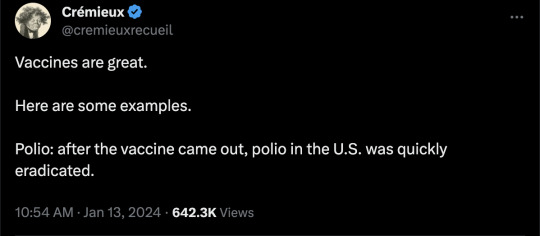
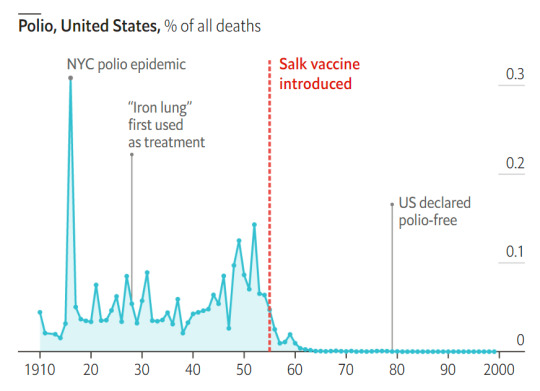



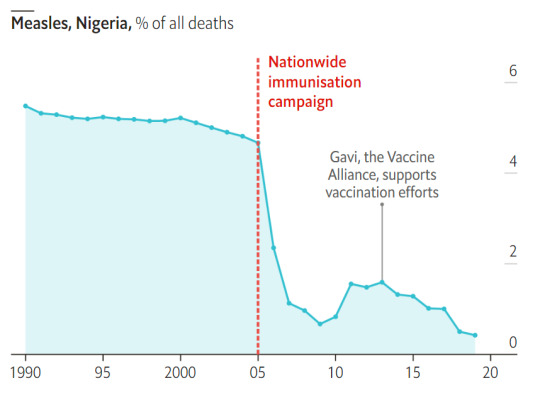

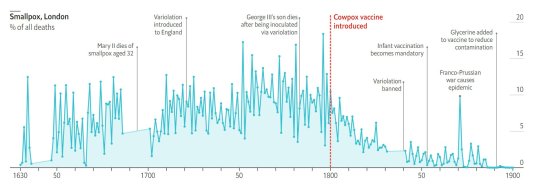

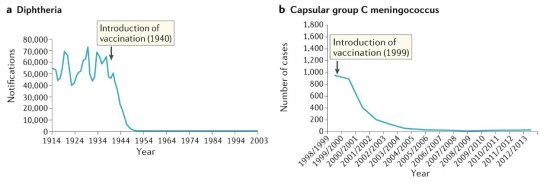

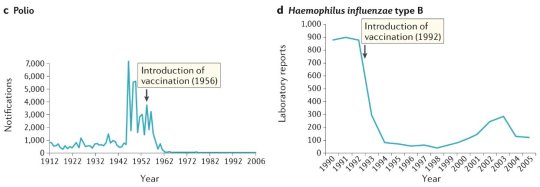

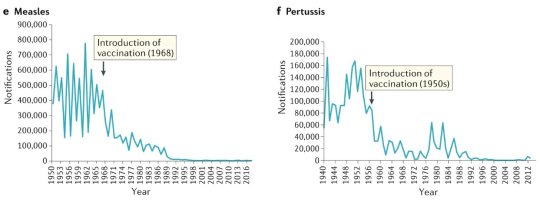
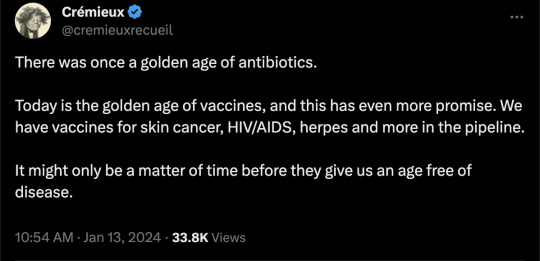
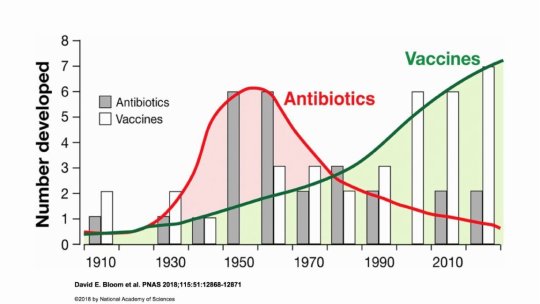



#vaccines#polio#measles#smallpox#diphtheria#meningococcal meningitis#haemophilus influenzae type B#pertussis#vaccine hesitancy#anti vaxxers#anti vax movement#antivaxers#COVID vaccine#anti vaccination#anti vaccine#science#medicine#religion is a mental illness#immunology
262 notes
·
View notes
Text
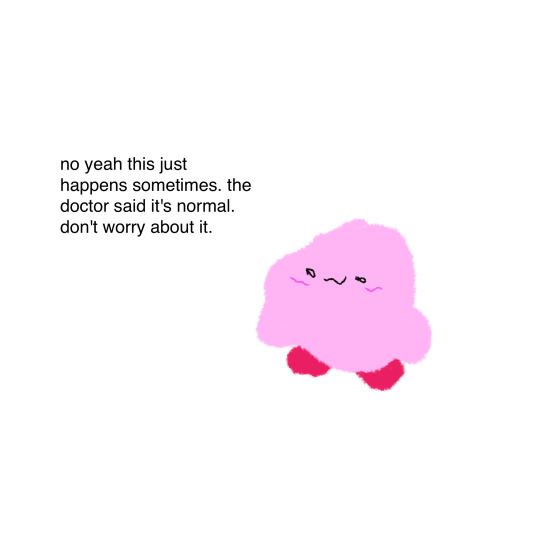
#kirby#cursed image#daily kirby#my art#digital#hal laboratory#nintendo#less than 50 days now until my immunology appointment#and miraculously my health is still managing to get even worse!#I'm genuinely kind of impressed.#and like. there is absolutely zero guarantee that the immunologist will even like. do their job. so.#feeling very *see above*#so like uh. I'm not religious but if you're the praying type it probably wouldn't hurt to throw me in occasionally if you've got room.#it's gonna be brutal if this one can't/won't treat me either.#favorites
177 notes
·
View notes
Text
The distorted perception of real versus believed risks posed obvious harms.
Misguided Personal Choices: Individuals may make poor health choices based on inaccurate risk perceptions, such as neglecting preventive measures or engaging in risky behaviors.
Policy and Resource Misallocation: Governments and health organizations may allocate resources inefficiently, focusing on less impactful but more sensational risks.
Erosion of Trust in Science and Public Health Institutions: When public perceptions do not align with scientific evidence, it can erode trust in experts and institutions, leading to resistance against public health measures. This makes it much more difficult to get buy-in for a variety of interventions that have data to support them, from routine vaccinations, to overall lifestyle habits, to voting for specific policies during elections.
Increased Health Disparities: Groups with limited access to accurate information may be particularly affected by the risk perception gap, exacerbating health disparities. For example, in the context of food misinformation and risk perception gap, individuals with lower socioeconomic status are more likely to buy and eat fewer fruits and vegetables when they encounter false messaging about the harms of pesticides, which poses a FAR greater risk than the essentially non-existent risk of trace pesticide residues.
Delayed Response to Emerging Threats: Underestimating certain risks leads to delayed responses to emerging health threats, worsening public health outcomes. This is especially the case with issues such as climate change, when decisions and policies made now will only be measurable years down the line.
Addressing the risk perception gap requires a multi-pronged approach. We need improved communication strategies that make scientific and health information more accessible and understandable to the public, along with efforts to build trust and engage communities in dialogue about risk and health decisions. Much of this requires an educational foundation, so that people better understand how scientific research is conducted, how risk is calculated, and what that means for your everyday choices. Our media and social media organizations have a responsibility as well: to not give equal weight to claims that are unsupported, and to not deliberately feed emotion-based messaging.
Science literacy is critical, so that people can understand the difference between anecdotes and robust evidence, and more appropriately evaluated the information they encounter. All of us can take steps to enable this, so that our society on the whole is better equipped to navigate the deluge of fear-based messaging that only serves to hinder scientific progress and cause harm.
— Andrea Love, PhD | Immunologist & Microbiologist
#risk perception gap#andrea love#immunologic#science literacy#Gmo#vaccine#climate change#pesticides#glyphosate
1 note
·
View note
Text
Researchers have discovered a link between a chronic gut infection caused by a common virus and the development of Alzheimer's disease in some people. Most people encounter cytomegalovirus (CMV) during childhood, and after the initial infection the virus remains in the body for life, usually dormant. By the age of 80, 9 out of 10 people will have CMV's telltale antibodies in their blood. A type of herpesvirus, the pathogen spreads via body fluids (such as breast milk, saliva, blood, and semen) but only when the virus is active.
Continue Reading.
155 notes
·
View notes
Text
"A team of researchers at Washington University in St. Louis has developed a real-time air monitor that can detect any of the SARS-CoV-2 virus variants that are present in a room in about 5 minutes.
The proof-of-concept device was created by researchers from the McKelvey School of Engineering and the School of Medicine at Washington University...
The results are contained in a July 10 publication in Nature Communications that provides details about how the technology works.
The device holds promise as a breakthrough that - when commercially available - could be used in hospitals and health care facilities, schools, congregate living quarters, and other public places to help detect not only the SARS-CoV-2 virus, but other respiratory virus aerosol such as influenza and respiratory syncytial virus (RSV) as well.
“There is nothing at the moment that tells us how safe a room is,” Cirrito said, in the university’s news release. “If you are in a room with 100 people, you don’t want to find out five days later whether you could be sick or not. The idea with this device is that you can know essentially in real time, or every 5 minutes, if there is a live virus in the air.”
How It Works
The team combined expertise in biosensing with knowhow in designing instruments that measure the toxicity of air. The resulting device is an air sampler that operates based on what’s called “wet cyclone technology.” Air is sucked into the sampler at very high speeds and is then mixed centrifugally with a fluid containing a nanobody that recognizes the spike protein from the SARS-CoV-2 virus. That fluid, which lines the walls of the sampler, creates a surface vortex that traps the virus aerosols. The wet cyclone sampler has a pump that collects the fluid and sends it to the biosensor for detection of the virus using electrochemistry.
The success of the instrument is linked to the extremely high velocity it generates - the monitor has a flow rate of about 1,000 liters per minute - allowing it to sample a much larger volume of air over a 5-minute collection period than what is possible with currently available commercial samplers. It’s also compact - about one foot wide and 10 inches tall - and lights up when a virus is detected, alerting users to increase airflow or circulation in the room.
Testing the Monitor
To test the monitor, the team placed it in the apartments of two Covid-positive patients. The real-time air samples from the bedrooms were then compared with air samples collected from a virus-free control room. The device detected the RNA of the virus in the air samples from the bedrooms but did not detect any in the control air samples.
In laboratory experiments that aerosolized SARS-CoV-2 into a room-sized chamber, the wet cyclone and biosensor were able to detect varying levels of airborne virus concentrations after only a few minutes of sampling, according to the study.
“We are starting with SARS-CoV-2, but there are plans to also measure influenza, RSV, rhinovirus and other top pathogens that routinely infect people,” Cirrito said. “In a hospital setting, the monitor could be used to measure for staph or strep, which cause all kinds of complications for patients. This could really have a major impact on people’s health.”
The Washington University team is now working to commercialize the air quality monitor."
-via Forbes, July 11, 2023
-
Holy shit. I know it's still early in the technology and more testing will inevitably be needed but holy shit.
Literally, if it bears out, this could revolutionize medicine. And maybe let immunocompromised people fucking go places again
Also, for those who don't know, Nature Communications is a very prestigious scientific journal that focuses on Pretty Big Deal research. Their review process is incredibly rigorous. This is an absolutely HUGE credibility boost to this research and prototype
#covid#covid 19#pandemic#plague#rsv#influenza#the flu#science and technology#medical research#medical technology#biochemistry#immunology#good news#hope#hope posting
6K notes
·
View notes
Text
Tw: paywall (just have to create a free account)
35 notes
·
View notes
Text

34 notes
·
View notes